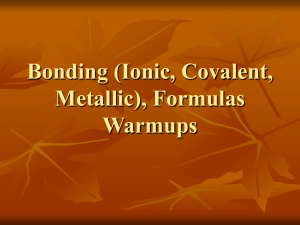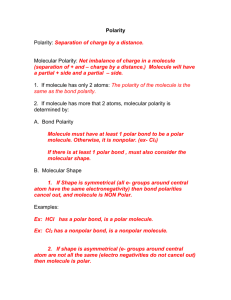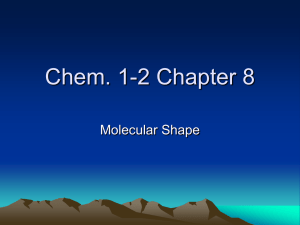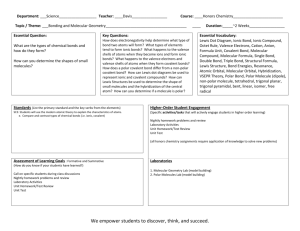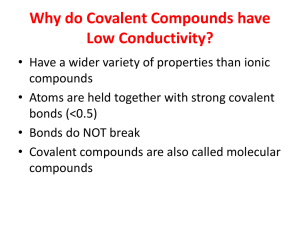Lab9.1 Shapes and Polarity.doc
advertisement
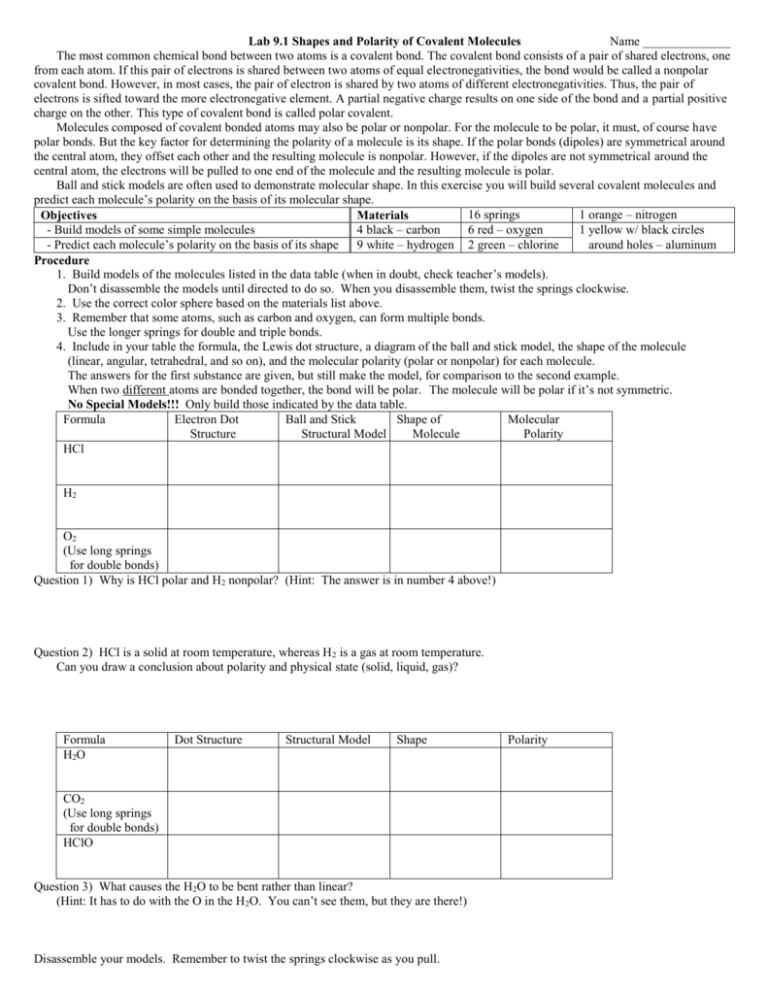
Lab 9.1 Shapes and Polarity of Covalent Molecules Name ______________ The most common chemical bond between two atoms is a covalent bond. The covalent bond consists of a pair of shared electrons, one from each atom. If this pair of electrons is shared between two atoms of equal electronegativities, the bond would be called a nonpolar covalent bond. However, in most cases, the pair of electron is shared by two atoms of different electronegativities. Thus, the pair of electrons is sifted toward the more electronegative element. A partial negative charge results on one side of the bond and a partial positive charge on the other. This type of covalent bond is called polar covalent. Molecules composed of covalent bonded atoms may also be polar or nonpolar. For the molecule to be polar, it must, of course have polar bonds. But the key factor for determining the polarity of a molecule is its shape. If the polar bonds (dipoles) are symmetrical around the central atom, they offset each other and the resulting molecule is nonpolar. However, if the dipoles are not symmetrical around the central atom, the electrons will be pulled to one end of the molecule and the resulting molecule is polar. Ball and stick models are often used to demonstrate molecular shape. In this exercise you will build several covalent molecules and predict each molecule’s polarity on the basis of its molecular shape. 16 springs 1 orange – nitrogen Objectives Materials - Build models of some simple molecules 4 black – carbon 6 red – oxygen 1 yellow w/ black circles - Predict each molecule’s polarity on the basis of its shape 9 white – hydrogen 2 green – chlorine around holes – aluminum Procedure 1. Build models of the molecules listed in the data table (when in doubt, check teacher’s models). Don’t disassemble the models until directed to do so. When you disassemble them, twist the springs clockwise. 2. Use the correct color sphere based on the materials list above. 3. Remember that some atoms, such as carbon and oxygen, can form multiple bonds. Use the longer springs for double and triple bonds. 4. Include in your table the formula, the Lewis dot structure, a diagram of the ball and stick model, the shape of the molecule (linear, angular, tetrahedral, and so on), and the molecular polarity (polar or nonpolar) for each molecule. The answers for the first substance are given, but still make the model, for comparison to the second example. When two different atoms are bonded together, the bond will be polar. The molecule will be polar if it’s not symmetric. No Special Models!!! Only build those indicated by the data table. Formula Electron Dot Ball and Stick Shape of Molecular Structure Structural Model Molecule Polarity HCl H2 O2 (Use long springs for double bonds) Question 1) Why is HCl polar and H2 nonpolar? (Hint: The answer is in number 4 above!) Question 2) HCl is a solid at room temperature, whereas H 2 is a gas at room temperature. Can you draw a conclusion about polarity and physical state (solid, liquid, gas)? Formula H2O Dot Structure Structural Model Shape CO2 (Use long springs for double bonds) HClO Question 3) What causes the H2O to be bent rather than linear? (Hint: It has to do with the O in the H2O. You can’t see them, but they are there!) Disassemble your models. Remember to twist the springs clockwise as you pull. Polarity Formula NH3 Dot Structure Structural Model Shape Polarity AlH3 H2CO (One double bond) Question 4) Why does the NH3 bend downward, while the other 2 models lie flat as a pancake? (Hint: It has do do with the same reason the H2O is bent rather than linear. You can’t see them, but they are there!) Disassemble your models. Remember to twist the springs clockwise as you pull. Formula Dot Structure Structural Model Shape CH4 Polarity CH3Cl C2H2 (One triple bond) Question 5) Between the CH4 and the CH3Cl, one is polar and one is nonpolar, yet they have the same shape. Explain why difference. Conclusions 1. On the basis of this experiment and your classwork, predict the (a) type of bonding (ionic or covalent), (ionic: metals and non-metals, covalent: two non metals) (b) if it’s covalent, the molecular shape and polarity for the following: Substance Type of Bonding Shape Polarity a. BaCl2 b. Cl4 c. SCl2 d. PH3 e. AlCl3

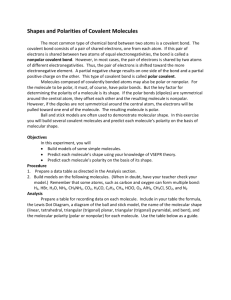
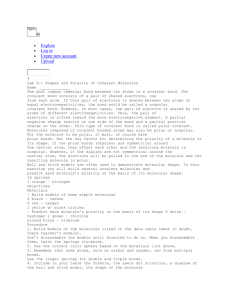


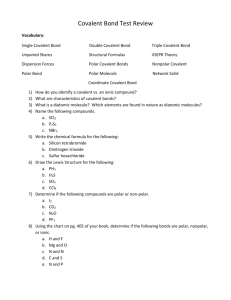
![QUIZ 2: Week of 09.03.12 Name: [7pts] 1.) Thoughtful list of 3](http://s3.studylib.net/store/data/006619037_1-3340fd6e4f1f4575c6d8cf5f79f0ff3e-300x300.png)

